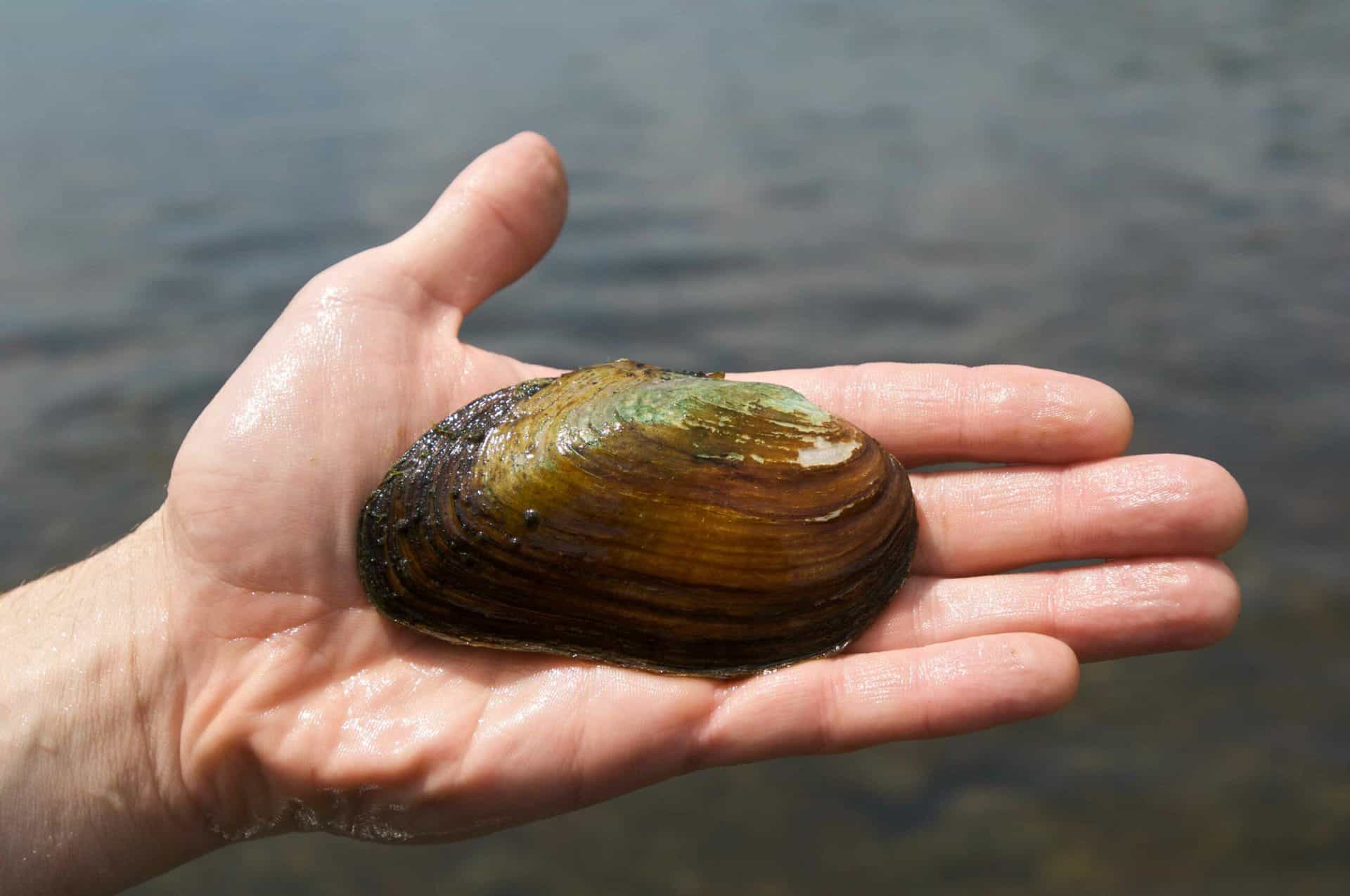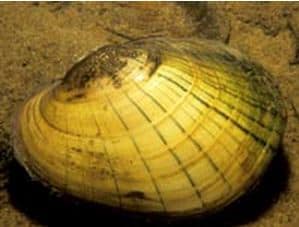Native Freshwater Mussels

By André L. Martel, PhD. SCUBA diver and aquatic biologist, Canadian Museum of Nature
Most Canadians who love the outdoors have, at some point in time, seen empty shells of freshwater mussels, or clams, along the lake or river shore while enjoying their favorite recreational activities. If you are a cottage owner, canoeist, boater, or a simply enjoy roaming or beachcombing along the shore, then you have probably observed live mussels partly buried in the river bed near boat launches or beaches. But did you know that there are 55 different kinds of freshwater mussels in Canada’s lakes and rivers, with 41 species in Ontario alone? In fact, Canada has one of the richest and most diverse freshwater mussel fauna compared with the rest of the world, yes the world! In the Ottawa River and its tributaries, scientists have inventoried 17 different species of mussels, some of which rare and unique to our region. There are more species of mussels in the Ottawa River than in all the lakes and rivers in Europe (they have only 12 species)!

Photograph of an adult Plain Pocketbook mussel; Ottawa River. This mussel is widespread in the Ottawa River.
But to appreciate freshwater mussels we need to know what purpose they fulfill in our waters, and how they reproduce. Their story is simply fascinating (see Figures). Freshwater mussels are filter feeders, pumping water inside their shell and eating tiny food particles, including tiny algae, bacteria and detritus present in the water; in large numbers they literally clean up the water! For most species this water filtering process goes on from about April to November (some still filter feed in the winter under the ice). Look closely as you wade nearshore, and you may see freshwater mussels with their shells gaping open, with their siphonal apertures feeding and filtering water at the same time (in fact, each mussel can filter and clean well over 50 litres of water per day). Another great service they provide is to mix and oxygenate the river or lake bottom sediments. This is done thanks to a powerful muscular foot, allowing the animal to burrow into gravel, sand or mud, and plow through the sediment, often leaving a narrow ‘track’ behind. This process oxygenates the bottom and increases productivity and diversity of life forms living on the bottom. They are like the earth worms in your garden soil!

Underwater photograph of a female Plain Pocketbook mussel displaying its (same location); note the eye spot and the long ‘tail’ of the lure. Ottawa River
The fascinating story about mussel life continues when we examine how mussels reproduce and disperse in rivers and lakes. Firstly, mussels keep their eggs inside special gill pouches. The eggs develop into tiny embryos, or larvae, about the size of a sand grain. These embryos are eventually released and must attach to a fish’s fins or gills, in order to complete larval development and disperse throughout the river. The fish’s job is then to disperse and propagate the mussel population. Some mussels common in the Ottawa River, like the Plain Pocketbook mussel (Lampsilis cardium) (Figures 1-3) even go fishing! The female displays a special part of its flesh that is shaped like and looks like a fish, or fish lure, including eye spots, a long tail and dorsal fins (Figures 2 & 3). This ‘lure’ is meant to attract fish. When the fish approaches the mussel’s ‘lure’, the mussel releases a cloud of tiny embryos. Some of them will successfully attach to a fish and hitch a ride! After a few weeks (or months depending on the species) the embryo has metamorphosed into a tiny juvenile mussel, which then drops off the fish onto the river bottom and begins its life as a mussel!

Underwater photograph of a of the Plain Pocketbook, this time not in full display, but ‘at rest’; note siphonal apertures of the mussel. Ottawa River, ON
The freshwater mussel fauna of the Ottawa River is rich and worth preserving. Mussels need your help to survive in today’s challenging times with water pollution and environmental changes due to human activities. A rich freshwater mussel fauna goes along with a rich fish fauna, and that is what everyone wants in the Ottawa River.

Underwater photograph of an adult Eastern Elliptio; a very common mussel in the Ottawa River. Photo: near McLaren’s Landing, Ottawa River, ON
If you use a beach or a boat launch along the Ottawa River and mussels are a bit of a problem for the feet, simply take the time to remove them, by hand or with a garden rake, and relocate them to another nearby area along the river (ex. 100-200 feet away, or about 50-70 meters, from the launch). Don’t hesitate to pick them up with your bare hands—they won’t sting or bite, and they are not slimy. They are totally harmless. Mussels move only slightly along the sandy or muddy bottom of the river and will likely not return to the same spot. If you really want to rid your beach of mussels, then you need to search and relocate the mussels several times during the season. Using a mask and snorkel can make searching for mussels fun; be sure that you are a good swimmer and that you swim with a buddy. Also be sure that the area you swim in is safe (no strong currents or boats). When you relocate mussels, promptly return them to the river, in deep enough water (3-15 feet deep is best); otherwise they may suffocate and die of heat and air exposure. Releasing the live mussels is easy and can even be done from the shore, by gently throwing them back into deep water, far from enough from shore. That way they will survive, interact with local fishes and reproduce.
Mussels are of great benefit to water quality of the Ottawa River and they need your help. Let’s take care of Canada’s natural water filters!

Museum of Nature biologist Dr. Andre Martel in diving gears, getting ready to photograph freshwater mussels in their natural habitat. Ottawa River, near the boat ramp at Fitzroy Provincial Park, ON.
All photos by André Martel, reproduced courtesy of the Canadian Museum of Nature, Ottawa, Canada

